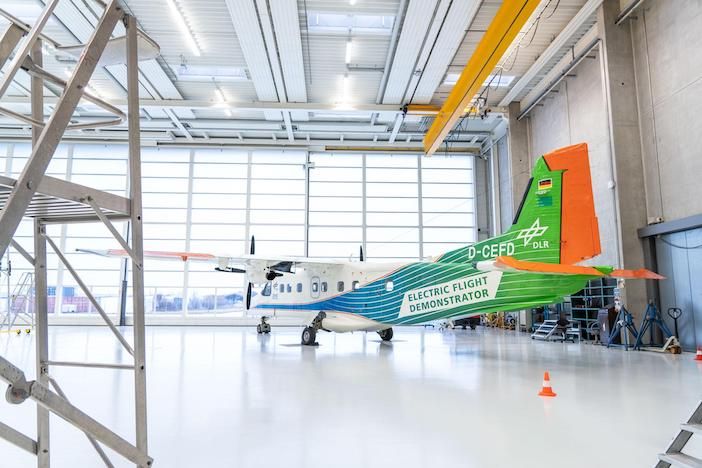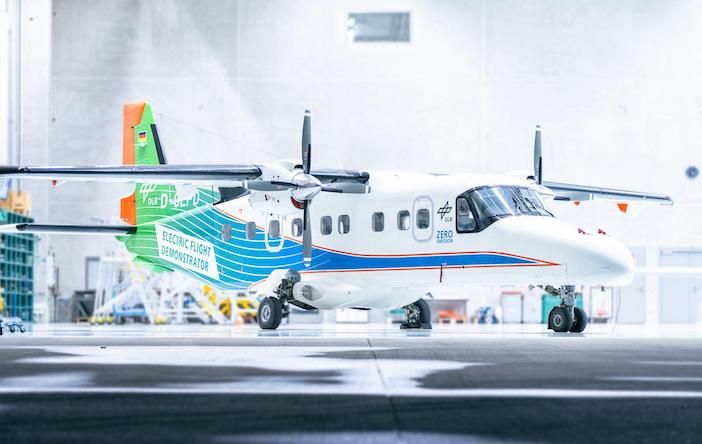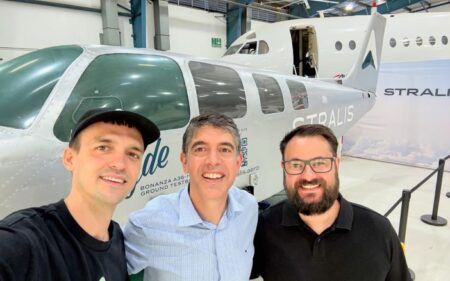Germany’s Aerospace Research agency has taken delivery of the flying testbed to be used in its hydrogen fuel cell propulsion project.
The German Aerospace Center’s (Deutsches Zentrum für Luft- und Raumfahrt; DLR) Do 228 research aircraft D-CEFD will be used to test electric propulsion technologies, starting with a project with MTU Aero Engines. The program, which will involve up to 80 engineers, aims to replace one of the two conventional engines with a 600-kilowatt electric propulsion system powered by a fuel cell and fly the testbed by 2025.
The aircraft was handed over to the by aircraft MRO company General Atomics AeroTec Systems (GA-ATS) in mid-November 2021. Preparations are now under way at the DLR site in Oberpfaffenhofen to upgrade the aircraft into a flying technology platform.
Markus Fischer, divisional board member for aeronautics at DLR said, “The concept of combining electric propulsion units with fuel cells has a lot of potential for feeder and regional aircraft. We hope that the new Do 228 D-CEFD test platform will mark a significant advance for this technology concept.”
The new research aircraft will be used to test a wide variety of components and entire propulsion systems in detail under real operating conditions.
Barnaby Law, chief engineer in the Flying Fuel Cell department at MTU said, “A liquid hydrogen and fuel cell system can power the aircraft of the future with no emissions apart from water. And that is precisely our goal – zero emissions.
“The experience and data gained, including in regulatory matters and airworthiness certification are crucial for our further product development.”
The aircraft, which was previously used for commercial passenger flights has been overhauled and repainted by General Atomics AeroTec Systems to DLR’s specifications. “The ‘Do 228’ aircraft is already used worldwide to protect countries from coastal pollution using precise reconnaissance and surveillance technology,” said Harald Robl, managing director of General Atomics AeroTec Systems.
“The DLR and MTU project represents an opportunity to make our own contribution to environmental protection in the future, using new propulsion technologies. In doing so, we can help to combat the climate crisis.”
General Atomics AeroTec Systems will continue to support the progress of the project as a technology partner.

Cooling challenge
The aim of the the joint DLR-MTU research program is to develop an electric powertrain that is suitable for air transport and uses liquid hydrogen as the energy source, with all the necessary additional components such as the cooling system. Up to 80 engineers will be involved in the project.
The research aircraft will initially be used to test individual system components. It will then be extensively modified to test the entire hybrid-electric propulsion system developed by MTU.
The left-hand turboprop engine will be removed and replaced by an electric motor during the project. The power required for the motor will be provided by fuel cells housed in the fuselage, which will also contain a tank to provide the hydrogen required to operate the fuel cell.
The heat generated by the fuel cell will be dealt with by an efficient cooling system to be developed by the project.
The Do 228 D-CEFD flying laboratory’s first flight is planned to take place by 2025 after ground testing and preliminary trials over the coming years.
Engineers at DLR will handle integrating the powertrain into the new research aircraft as well as examine areas of research such as aerodynamics and aeroelasticity and provide overall systems expertise. MTU has been tasked with developing the entire hydrogen-powered fuel cell powertrain, including the liquid hydrogen fuel system. All of the work and integration will be carried out jointly and in close coordination.





